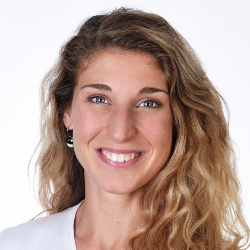Scoliosis in children in Lausanne: prevention, support, rebalancing
Scoliosis in children: understand and act early
Scoliosis in children is a spinal deformity frequently encountered in pediatric physiotherapy. It manifests itself as a lateral curvature, visible to the naked eye or detected during a postural assessment. It affects around 2-3% of children, particularly during the period of rapid growth between the ages of 8 and 15.
This curvature may be slight and go unnoticed at first. The most common signs are a higher shoulder, a protruding shoulder blade or a misaligned pelvis. In 90% of cases, scoliosis in children remains stable and does not require extensive treatment if treated early. Regular physiotherapy follow-up is therefore essential.
(source: NIAMS - Scoliosis)
Why is physiotherapy recommended for scoliosis in children?
In the case of scoliosis, physiotherapy is one of the first approaches recommended. It allows us to observe the evolution of the curvature, relieve any pain and support growth with appropriate exercises.
Through a precise assessment, the physiotherapist identifies postural imbalances, strengthens weak areas and improves mobility. Specific methods, such as postural exercises, are used to actively influence spinal deviation. These exercises are fun, personalized and encourage the child to adopt good reflexes in everyday life.
When a corset is prescribed, physiotherapy also helps to support it better, to move with comfort and to maintain good muscle tone.
(source: Cochrane - Exercise therapy for scoliosis)

What results can I expect from rehabilitation?
Physiotherapy slows the development of curvature, prevents pain and optimizes posture. The child gains in confidence, autonomy and comfort in daily life.
Rehabilitation also helps improve body awareness. It strengthens back muscles and promotes more stable alignment, without forcing. It often complements the use of a corset, but can also be sufficient on its own in mild forms.
The gentle, progressive and targeted approach allows the exercises to be integrated into the child's rhythm of life, without constraint. Regular follow-up is a major asset in supporting the child and reassuring the parents.
(source: PubMed - Effectiveness of scoliosis-specific exercises)
A gentle, targeted approach at Centre Philae, Lausanne
At the Centre Philae in Lausanne, we offer a personalized, caring approach to children with scoliosis. Sessions are led by Émilie, a physiotherapist specialized in pediatrics and trained in the management of childhood and adolescent scoliosis.
At the first appointment, a complete postural assessment is carried out. It identifies curvature, assesses mobility, strength and asymmetries. Based on these observations, a program of specific exercises is proposed. Work is progressive, fun and always adapted to each child.
Émilie also helps families understand scoliosis. She gives concrete advice on postures to adopt at school, at home or during sporting activities. The link is maintained with the attending physician to ensure comprehensive and coherent follow-up.

